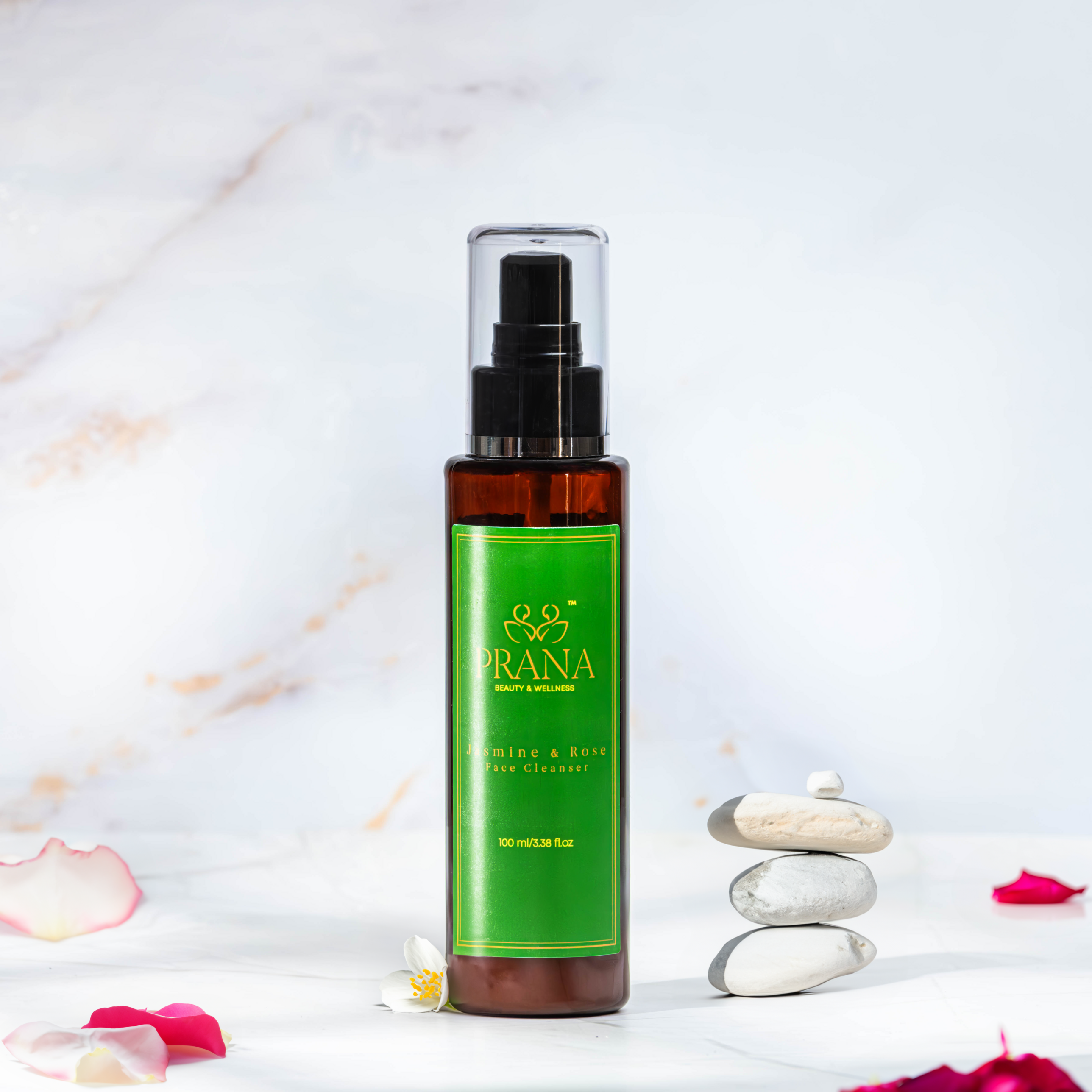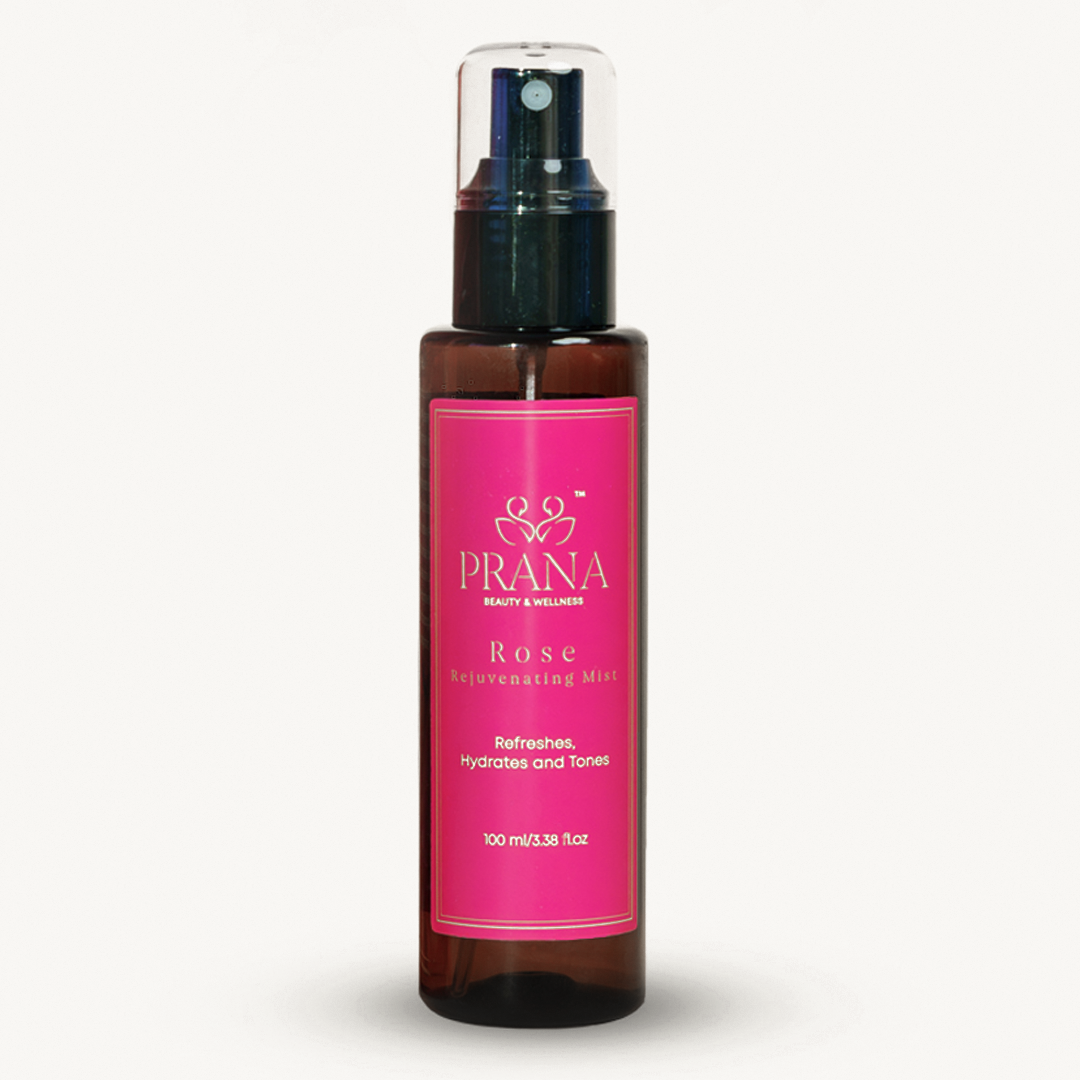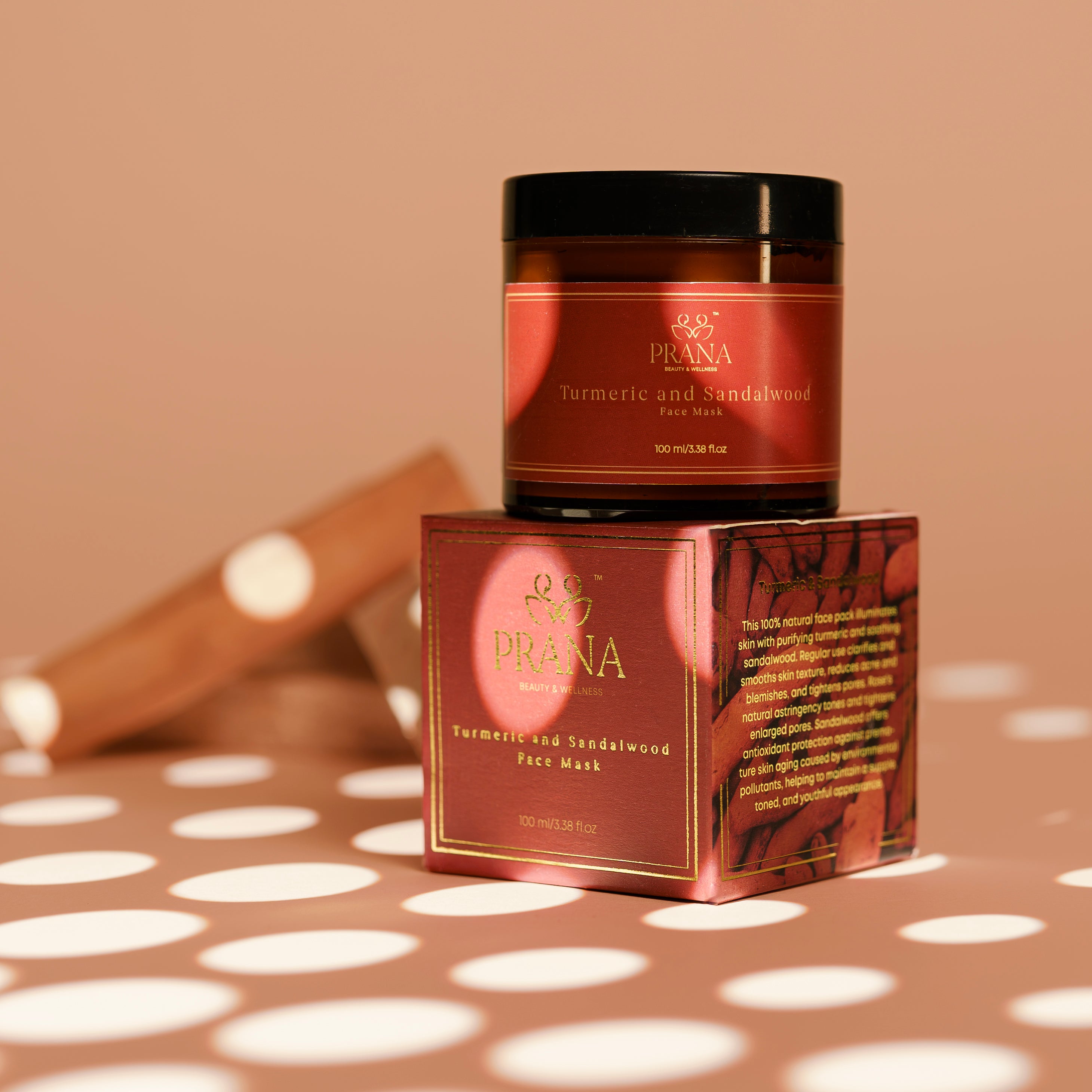Abhyanga: The Ancient Art of Ayurvedic Self-Massage

In our fast-paced world, finding moments of self-care becomes increasingly precious. Abhyanga, the Ayurvedic practice of self-massage with warm oil, offers not just a pause in your day but a transformative ritual that has been nurturing body and mind for thousands of years. This daily practice is more than skin-deep—it's a profound act of self-love that harmonizes your entire being, connecting you to ancient wisdom while addressing modern wellness needs.
What is Abhyanga?
Abhyanga is a cornerstone of Ayurvedic daily routine (dinacharya), involving the application of warm oil to the entire body, followed by a gentle self-massage. The Sanskrit word comes from "abhi" (into/toward) and "anga" (limb), literally meaning to bring energy into your body. In traditional Ayurvedic texts, it's also called "snehana," which translates to "love" or "to nurture"—perfectly capturing its essence as an act of self-care.
Unlike conventional massages that focus primarily on muscle relaxation, Abhyanga addresses the whole person—body, mind, and spirit. It's designed to balance your unique constitution or dosha, while stimulating the body's natural detoxification processes and energy channels (nadis).
This daily practice has been cherished in India for millennia, where it's considered as essential to wellbeing as proper nutrition and sound sleep. In our modern context, it offers a powerful antidote to stress, disconnection, and the physical toll of contemporary living.
The Transformative Benefits of Abhyanga
Physical Benefits
-
Improves blood circulation throughout the body
-
Stimulates lymphatic drainage to remove toxins
-
Nourishes and moisturizes the skin
-
Reduces muscle tension and joint stiffness
-
Improves sleep quality and patterns
-
Strengthens the body's immune response
Mental and Emotional Benefits
-
Significantly reduces stress and anxiety
-
Creates a sense of groundedness and stability
-
Promotes mental clarity and focus
-
Fosters a deeper connection with your body
-
Cultivates self-compassion through mindful touch
-
Balances emotions and mood
-
Creates a protective barrier against daily stressors
According to a small 2011 study published in the Journal of Alternative and Complementary Medicine, participants who received Abhyanga massage showed decreased subjective stress levels and reduced heart rate. The research also noted improved blood pressure in those with prehypertension.
Spiritual and Energetic Benefits
Beyond the physical and mental benefits, Abhyanga works on subtler levels too. In Ayurvedic philosophy, this practice helps to:
-
Balance the doshas (Vata, Pitta, and Kapha energies)
-
Clear and strengthen the body's energy channels
-
Enhance your connection to self-awareness
-
Create a protective energetic shield against negative influences
-
Support overall vitality and longevity
Experience Deep Relaxation
Ready to transform your self-care routine? Discover how Forest Essentials' specially formulated oils can enhance your Abhyanga practice.
The Art of Abhyanga: Step-by-Step Technique
Abhyanga is both simple and profound. The following technique combines traditional Ayurvedic wisdom with practical modern application. Remember that consistency is more important than perfection—even a brief daily practice yields significant benefits.
Preparation
Choose your oil: Select an appropriate oil for your dosha (more on this in the oils section).
Warm the oil: Gently warm approximately ¼ cup of oil by placing the container in hot water for a few minutes. The oil should be comfortably warm, never hot.
Create a sacred space: Find a warm, draft-free area where you won't be disturbed. Place a towel on the floor to catch any oil drips.
Set your intention: Take a moment to breathe deeply and set an intention for your practice—perhaps self-nurturing, healing, or simply presence.
The Massage Sequence
Begin by applying oil to your entire body before starting the massage strokes. This ensures maximum absorption time.
Head and Face (Start Here)
-
Scalp: Apply oil to your scalp with your fingertips, using circular motions like "kneading dough"—firm yet gentle.
-
Face: With light pressure, massage your forehead with outward strokes, then circles around the temples. Move to the cheeks with upward strokes, and gentle circles around the jaw.
-
Ears: Pay special attention to your ears, which contain important marma points. Apply oil inside and outside, massaging gently.
Torso and Limbs
-
Neck and Shoulders: Use long strokes on the neck, and circular motions on the shoulders, imagining you're melting away tension.
-
Chest and Abdomen: Massage your chest with outward strokes from the center. On the abdomen, use gentle clockwise circular motions, following the direction of digestion.
-
Arms and Hands: Long strokes on the arms, circular motions at the joints. Pay special attention to your palms and fingers.
-
Back: Reach what you can of your back with circular motions, focusing on the lower back with extra care.
-
Legs and Feet: Long, firm strokes on the legs, circular motions at the knees and ankles. Spend extra time on your feet, massaging each toe and the soles thoroughly.
"The strokes in Abhyanga aren't just mechanical movements—they're a conversation with your body. Circular motions speak to your joints and energy centers, while long strokes communicate with the flow of your circulation and lymph."
- Ancient Ayurvedic Wisdom
After Your Massage
Rest for 5-20 minutes, allowing the oil to penetrate and the benefits to deepen.
Take a warm shower or bath, using minimal soap only where necessary.
Pat yourself dry with a towel you don't mind getting oily.
Notice how you feel—physically, mentally, and emotionally.
Safety Tip: Be careful not to slip after your oil massage. Use a non-slip mat in your shower or bath, and consider wearing old socks if you need to walk on tile floors.
Choosing the Perfect Oil for Your Abhyanga Practice
In Abhyanga, the oil isn't just a lubricant—it's medicine. Different oils carry unique properties that balance specific doshas and address various skin and body conditions. The right oil enhances the benefits of your practice significantly.
Understanding Your Dosha
According to Ayurveda, everyone has a unique constitution or dosha profile—a combination of Vata (air/space), Pitta (fire/water), and Kapha (earth/water) energies. While most people have one or two dominant doshas, the goal is to maintain balance among all three.
Vata Dosha
Characteristics: Dry skin, quick movements, creative, prone to anxiety
Best Oils: Warm, heavy oils like sesame or almond
Pitta Dosha
Characteristics: Sensitive skin, strong digestion, sharp intellect, prone to irritation
Best Oils: Cooling oils like coconut or sunflower
Kapha Dosha
Characteristics: Oily skin, steady energy, calm nature, prone to congestion
Best Oils: Light, stimulating oils like safflower or mustard
Seasonal Oil Considerations
Ayurveda recommends adjusting your oil based on the season:
-
Winter/Cold Weather: Heavier oils like sesame to protect against dryness
-
Summer/Hot Weather: Cooling oils like coconut to balance excess heat
-
Transitional Seasons: Medium-weight oils like almond to adapt to changing conditions
Find Your Perfect Abhyanga Oil
Not sure which oil is right for your constitution? Explore our complete collection of authentic Ayurvedic massage oils, each crafted according to traditional formulations.
The PRANA Turmeric glow oil is your perfect companion for a soothing Abhyanga routine.
https://www.pranabeauty.com/products/turmeric-brightening-glow-oil
Abhyanga: Where Ancient Wisdom Meets Modern Science
The practice of Abhyanga has been revered in Ayurvedic texts for thousands of years, and modern research is beginning to validate what tradition has long maintained. This intersection of ancient wisdom and contemporary science offers a compelling case for incorporating this ritual into your wellness routine.
Traditional Ayurvedic Perspective
According to the classical Ayurvedic text Charaka Samhita (compiled around 400-200 BCE), regular Abhyanga promotes longevity, improves sleep, and strengthens the body's resistance to external influences. The Ashtanga Hridayam, another foundational text, states:
"Abhyanga should be resorted to daily. It wards off old age, exertion and aggravation of vata dosha. It bestows good vision, nourishment to the body, long life, good sleep, healthy skin, and strength."
In the Ayurvedic understanding, Abhyanga works through several mechanisms:
-
Stimulating the marma points (vital energy centers similar to acupuncture points)
-
Balancing the doshas, particularly pacifying Vata which governs movement and the nervous system
-
Improving the flow of prana (life force) through the nadis (subtle energy channels)
-
Strengthening the dhatus (tissue layers) from the skin to the deeper structures
Modern Scientific Insights
Contemporary research offers several explanations for Abhyanga's effectiveness.
Skin Absorption
The National Center for Complementary and Integrative Health (NCCIH) acknowledges that certain compounds in oils can be absorbed through the skin. The warmth of the oil in Abhyanga dilates blood vessels near the skin surface, potentially enhancing this absorption.
Stress Reduction
A 2011 study published in the Journal of Alternative and Complementary Medicine found that Abhyanga massage reduced subjective stress levels and heart rate variability—a key indicator of the body's stress response.
Circulatory Benefits
Research published in the International Journal of Preventive Medicine suggests that massage techniques similar to Abhyanga can improve blood circulation and temporarily reduce blood pressure in some individuals.
Lymphatic Stimulation
The gentle, rhythmic strokes of Abhyanga may help stimulate lymphatic drainage, supporting the body's natural detoxification processes, according to studies on manual lymphatic drainage techniques.
While more research is needed to fully understand all the mechanisms behind Abhyanga's benefits, the existing evidence, combined with thousands of years of traditional use, suggests this practice offers genuine health advantages beyond simple relaxation.
Integrating Abhyanga Into Your Daily Routine
The true power of Abhyanga emerges through consistent practice. In traditional Ayurveda, it's considered a daily essential rather than an occasional luxury. Here's how to realistically incorporate this ritual into your modern lifestyle.
Ideal Timing
According to Ayurvedic principles, the best times for Abhyanga are:
-
Morning: Before bathing and breakfast to energize your day and protect your energy field
-
Evening: Before dinner to release the day's tension and prepare for restful sleep
If daily practice seems challenging at first, aim for 2-3 times per week, gradually building to daily consistency.
Time-Saving Approaches
Even when time is limited, you can still receive benefits:
-
Full Abhyanga (20-30 minutes): When you have ample time for the complete ritual
-
Modified Abhyanga (10-15 minutes): Focus on major areas—head, hands, feet, and joints
-
Mini Abhyanga (5-7 minutes): Apply oil to your scalp, ears, hands, and feet only
Practical Tip: Keep your oil in a squeeze bottle in the bathroom for easy access. On busy mornings, apply oil before stepping into the shower, let it sit while you practice oil pulling with PRANA 's All Natural Coconut Pulling oil.
https://www.pranabeauty.com/products/prana-all-natural-coconut-pulling-oil-mouthwash-237ml-8-fl-oz
Creating a Sacred Ritual
Enhance your Abhyanga experience by creating a mindful ritual around it:
-
Set a regular time that works with your schedule
-
Create a peaceful environment with soft lighting and perhaps gentle music
-
Begin with three deep breaths to center yourself
-
Express gratitude to your body as you massage each part
-
End with a moment of stillness to absorb the benefits
Frequently Asked Questions About Abhyanga
Can Abhyanga replace regular exercise?
While Abhyanga offers numerous benefits, it complements rather than replaces exercise. The massage improves circulation and flexibility, making it an excellent preparation for physical activity. For optimal wellness, combine Abhyanga with appropriate exercise for your constitution.
What's the best time of day for Abhyanga?
Traditionally, early morning before bathing is considered ideal as it prepares your body and mind for the day ahead. However, evening practice can be excellent for promoting relaxation and better sleep. Choose a time that you can maintain consistently.
Should I wash my hair every time I do Abhyanga?
Not necessarily. While applying oil to the scalp is beneficial, you can focus on the scalp rather than the hair strands if you don't want to wash your hair daily. After massage, use a warm towel to gently remove excess oil from the scalp, or apply oil to the scalp only on days when you plan to wash your hair.
Is Abhyanga safe during pregnancy?
Gentle self-massage can be beneficial during pregnancy, but certain techniques and pressure points should be avoided. Consult with your healthcare provider and an Ayurvedic practitioner before practicing Abhyanga during pregnancy. Generally, a gentler approach focusing on legs, feet, and arms is recommended.
How do I clean oil stains from towels and surfaces?
Designate specific "Abhyanga towels" that you don't mind getting oily. Wash them with hot water and a good detergent that cuts oil. For surfaces, a mixture of vinegar and baking soda can help remove oil residue. Always use a non-slip mat in your shower or bath to prevent accidents.
Can I use essential oils in my Abhyanga practice?
Yes, but use them properly. Add 2-3 drops of appropriate essential oils to your base carrier oil. Choose oils that balance your dosha—lavender or frankincense for Vata, sandalwood or rose for Pitta, and eucalyptus or bergamot for Kapha.
Embrace the Transformative Power of Abhyanga
Abhyanga is more than just a self-massage—it's a profound act of self-care that connects you to an ancient tradition while addressing very modern needs for balance, stress relief, and wellness. By taking just a few minutes each day to nurture yourself through this practice, you create ripples of positive change that extend to all aspects of your life.
As you begin or deepen your Abhyanga practice, remember that consistency matters more than perfection. Even a brief, mindful application of oil can yield significant benefits when done regularly. Listen to your body, adjust the techniques to suit your needs, and observe how this simple ritual transforms your relationship with yourself over time.
Begin Your Abhyanga Journey Today
Discover PRANA's collection of authentic Ayurvedic oils, handcrafted according to traditional formulations to enhance your self-massage practice.















